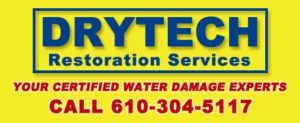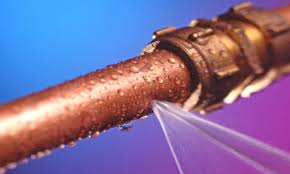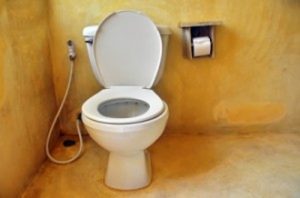 Water damage restoration training is one of the important skill sets that a team of professional cleaners need in order to offer comprehensive services. This is a service that involves going into a home or business after a wet disaster, such as flood, burst pipes, or snow destruction, and not just cleaning up the mess, but actually drying and repairing the substructures that high volumes of moisture will affect, such as plaster and drywall, wood, concrete, and metal. Mold is a concern, of course, but there can be many other problems related to moisture damage; crumbling drywall and plaster, weakening beams and supports, rusting metal surfaces, and more. If the moisture is left to sit long enough, it will eventually bring the house to ruin. By having professional water damage restoration training, a cleaning crew will be able to properly assess the situation and devise the best plan for repair.
Water damage restoration training is one of the important skill sets that a team of professional cleaners need in order to offer comprehensive services. This is a service that involves going into a home or business after a wet disaster, such as flood, burst pipes, or snow destruction, and not just cleaning up the mess, but actually drying and repairing the substructures that high volumes of moisture will affect, such as plaster and drywall, wood, concrete, and metal. Mold is a concern, of course, but there can be many other problems related to moisture damage; crumbling drywall and plaster, weakening beams and supports, rusting metal surfaces, and more. If the moisture is left to sit long enough, it will eventually bring the house to ruin. By having professional water damage restoration training, a cleaning crew will be able to properly assess the situation and devise the best plan for repair.
According the IICRC (Institute of Inspection Cleaning and Restoration Certification), which sets the standards for the cleaning industry and water damage restoration training, there are several different levels and classes involved in liquid destruction. From the IICRC’s S-500 standards, there are three categories describing the type of liquid involved.
• Category 1. This is liquid from a clean and sanitary source, such as faucets, toilet tanks, drinking fountains, etc. But, category one can quickly degrade into category two.
• Category 2. This category of liquid used to be called grey water, and is described as having a level of contaminates that may cause illness or discomfort if ingested. Sources include dishwasher or washing machine overflows, flush from sink drains, and toilet overflow with some urine but not feces.
• Category 3. This is the worst classification and is grossly unsanitary. It could cause severe illness or death if ingested. It used to be called black water, and sources include sewer backup, flooding from rivers or streams, toilet overflow with feces, and stagnant liquid that has begun to support bacterial growth.
Next are the classes of destruction.
• Class 1. The lowest and easiest to deal with, this has a slow evaporation rate. Only part of a room or area was affected, there is little or no wet carpet, and the moisture has only affected materials with a low permeance rate, such as plywood or concrete.
• Class 2. With a fast evaporation rate, this level affects an entire room, carpeting, or cushioning, the wetness has wicked up the walls at least 12”, and there is moisture remaining in structural materials.
• Class 3. This class has the fastest evaporation rate, and ceilings, walls, insulation, carpet and sub-floors are all saturated. The liquid may have come from overhead.
• Class 4. This class is labeled as specialty drying situations, which means there has been enough liquid and time to saturate materials with very low permeance, such as hardwood, brick, or stone.
 Burst pipes can be a financial headache for homeowners. Fortunately, homeinsurance typically covers unexpected burst pipes and the water damage that results, according to the Insurance Information Institute. However, you won’t be covered if the damage results from a slow leak that went unfixed for months.
Burst pipes can be a financial headache for homeowners. Fortunately, homeinsurance typically covers unexpected burst pipes and the water damage that results, according to the Insurance Information Institute. However, you won’t be covered if the damage results from a slow leak that went unfixed for months.
 A toilet, tub, sink overflows or a dishwasher explodes. The damage to the toilets, sinks, tubs and dishwasher as well as the water damage to home furnishings would be covered by the homeowners policy if it is determined to be “sudden or accidental”.
A toilet, tub, sink overflows or a dishwasher explodes. The damage to the toilets, sinks, tubs and dishwasher as well as the water damage to home furnishings would be covered by the homeowners policy if it is determined to be “sudden or accidental”.
- Water Damage
- Water Damage Restoration
- Fire Damage
- Fire Damage Restoration
- Disaster Clean Up
- Mold Remediation
- Toilet Overflow
- Disaster –Recovery Service – Earthquake Damage
- Property Damage –Recovery Service – Fire or Smoke Damage
- Water Damage – Recovery Service – Storm or Wind Damage
- Recovery Service – Water Removal
- Mold Remiediator
-
Mold can develop within 24 to 48 hours of a flood, says Ashley Small of FEMA, so remove wet contents, including carpeting and bedding, as soon as possible. If an item has been wet for less than 48 hours, it may be salvageable. However, you’ll need to decide whether it holds enough monetary or sentimental value to try to do so. And notify your insurance company before removing items to ensure that you’re not affecting coverage. Always photograph the flood-soaked items.
You may also wish to hire a flood restoration service—you can find pros under “Flood” or “Disaster recovery” in your local phone book, or check with the Better Business Bureau, local Chamber of Commerce, or contractor recommendation sites, such as Angieslist.com or MerchantCircle.com. Look for those with Institute of Inspection, Cleaning, and Restoration Certification.
Water Damage Restoration
Plumbing leaks, water heater overflow, natural flooding or even toilet backup can cause major water damage to your home or business. Working through the emotional and economic aftermath can be just as traumatic. Drytech Restoration Services Fire Damage Restoration
Fire damage is an obvious disaster. Even small fire can cause heavy damage as the smoke travels through vents and air leaks into non-fire damaged area of the house or building. On top of that, fire fighters hose the dwelling down with thousands of gallons of water from a hydryant or drafting the water from area such as lakes , ponds rivers . Mold Remdiation
Mold is a fungus which grows on organic matter in moist conditions. Mold exposure in your home or business is a major health concern. You can actually prevent mold before it happens. Drytech Restoration are certified mold remediators.– See more at: http://www.restorationrenegades.com/#sthash.i2FGvD9C.dpuf
Burst Pipe, Clean Up Flood damage, Cleaning And Restoration, Contractors, Dehumidification, Disaster Restoration, Drain BackUp, Drying Chamber, Emergency Water Damage Cleanup, Fire and Smoke, Fire Cleanup, fire damage, fire damage restoration companies, fire damage restoration process, fire damage restoration services, fire damage restoration standards, fire restoration contractors, fire restoration procedures, Flood Clean Up, Flood Damage Cleanup, Flood Drying, Flood Drying Building, Flood From Rain, Flood In My Basement, Flood Restoration, Flood Water Extraction, Frozen Pipe, Hurricane Cleanup, Industry Cleaning And Restoration News, Moisture Absorption, Moisture Removal, Mold Abatement, Mold Containment, mold remediation, mold remediation expert, mold remediation professional, New Construction, New House Build, Plumbing Disaster, property damage, Rain Damage, Rain On New Construction, Residential Flooding, Sewage Cleanup, Sewage Remediation, Sewage Removal, Storm Damage, Storm Wind Fire Smoke Water Mold, Structural Drying, Toilet Overflow, Water, water damage, Water Damage Company, Water Damage Drying, Water Damage Near Me, Water Damage Repair, Water Damage Restoration, Weather Damage, Wet Basement, Wet Carpet Extraction, wet lumber from rain, Wet OSB, What Happens if your Framing Gets Rained on?, What happens to wood when it gets wet?, Wind Damage
fire damage

